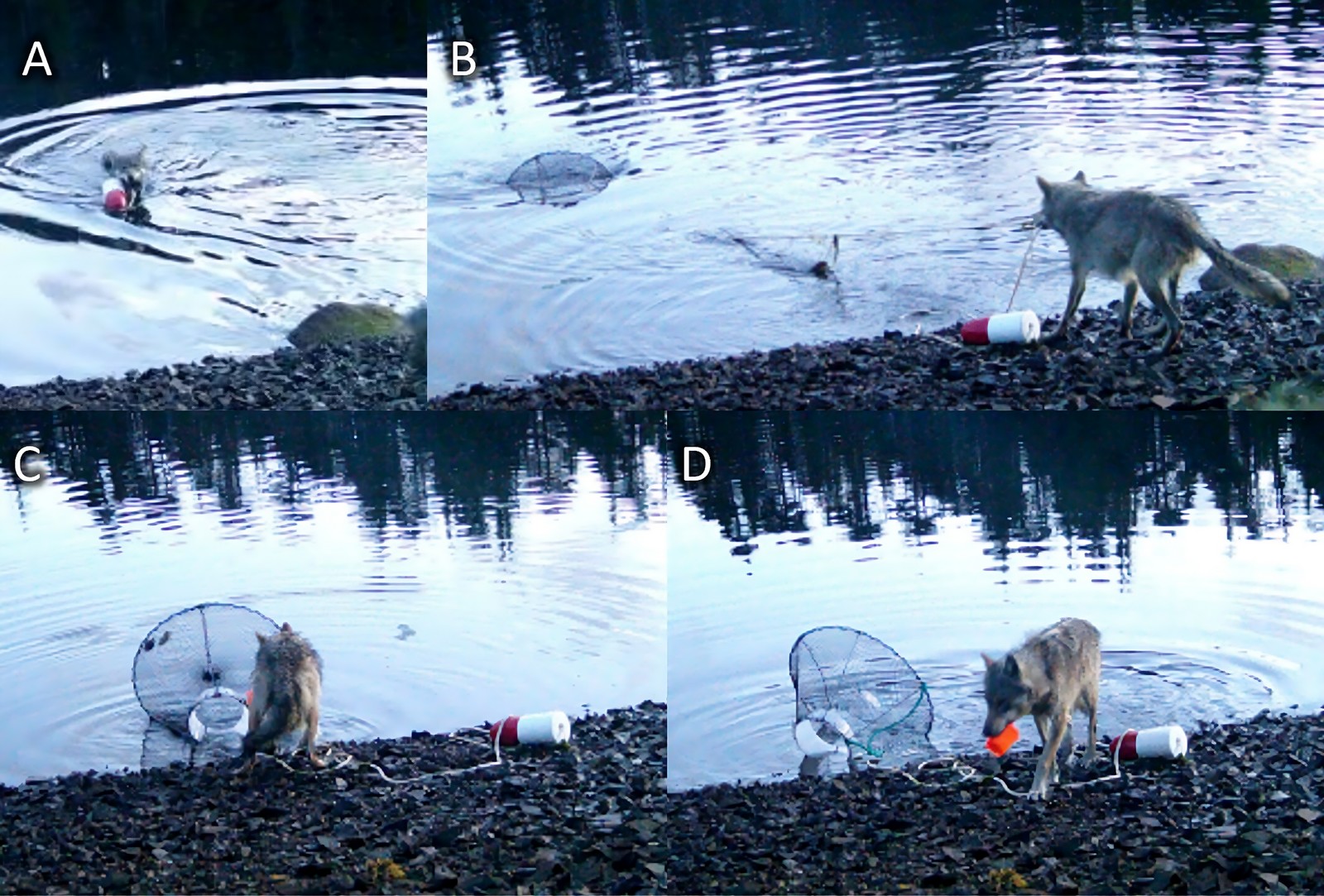🧠 Puzzling video of a wolf using tools created by humans
Published by Cédric,
Article author: Cédric DEPOND
Source: Ecology and Evolution
Other Languages: FR, DE, ES, PT
Article author: Cédric DEPOND
Source: Ecology and Evolution
Other Languages: FR, DE, ES, PT
Follow us on Google News (click on ☆)
The discovery emerged from a program to control the European green crab, an invasive species threatening the local ecological balance. Baited traps, initially intended to capture these crustaceans, were repeatedly looted. The identity of the culprit, captured by automatic cameras, surprised scientists: gray wolves mastering the mechanism for extracting the traps with puzzling precision.

Images from the video showing a wolf in the Haíɫzaqv territory pulling a submerged crab trap to the shore to reach the bait. Observation made on May 29, 2024 (the date displayed on the camera was incorrect).
Full video: see below.
A methodical demonstration
The footage shows a female wolf swimming toward a floating buoy, which she methodically brings back to the shore. The animal then grabs the rope connecting the buoy to the submerged trap, pulling in regular sequences until the device emerges from the water. This systematic approach goes far beyond simple exploratory behavior, indicating an understanding of the physical relationships between the different elements.
The study, published in Ecology and Evolution, emphasizes that the trap was completely submerged and invisible from the bank. The female wolf therefore had to conceptualize the link connecting the visible buoy to the hidden food source. This ability to mentally represent a causal system of multiple elements represents a significant cognitive leap for a non-primate species.
The demonstration does not stop there. Once the trap was out of the water, the animal opened the bait compartment with remarkable efficiency. The entire sequence, completed in less than three minutes, demonstrates a familiarity with the device. A second recording, made several months later, captures another individual performing similar maneuvers.
The scientific debate on tool use
The scientific community is questioning the classification of this behavior. The traditional definition of tool use requires the intentional manipulation of an object to achieve a specific goal. From this perspective, wolves fully meet the criteria, since they deliberately manipulate the buoy and rope to access the food.
Some specialists, cited in the Ecology and Evolution article, propose a more restrictive interpretation. They believe that the wolves did not create the functional relationship between the different elements of the system. Their action would be limited to exploiting a configuration pre-established by humans, without fully understanding the underlying principles.
The lead authors of the study propose an analogy: humans commonly use technologies (computers, smartphones) without understanding their internal mechanisms, without this calling their intelligence into question. This perspective shows that the skillful exploitation of a system, even without being its designer, deserves cognitive recognition. The debate remains open, but it greatly enriches our appreciation of wolves' capabilities.
To go further: How do wolves learn new behaviors?
Learning in wolves combines observation and experimentation. Young individuals imitate adults during hunting activities. This social transmission accelerates the acquisition of skills essential to their survival. The environment plays a key role in this process.
Coastal wolves develop behaviors specific to their ecosystem. They catch fish or hunt in the sea at low tide. This adaptability reflects their ability to take advantage of resources of different natures. Access to crab traps represents an extension of this behavioral plasticity.
Trial-and-error learning also allows for the discovery of new techniques. An innovative individual may see their behavior adopted by the rest of the pack. The low human pressure in this region probably favors these experiments. Wolves there spend more time exploring.